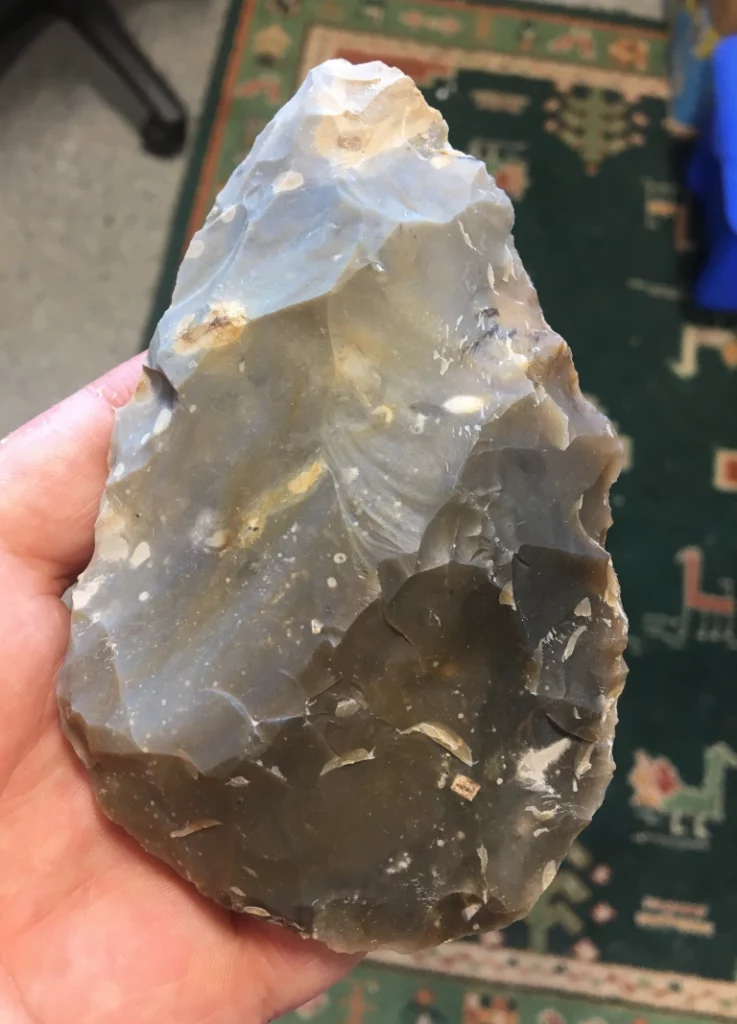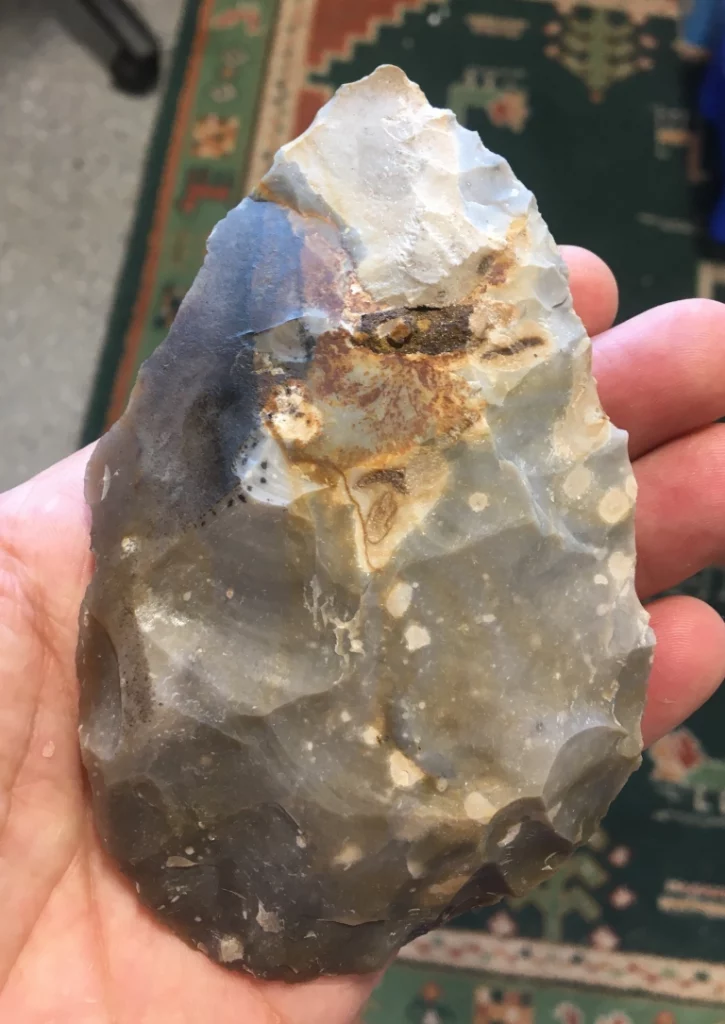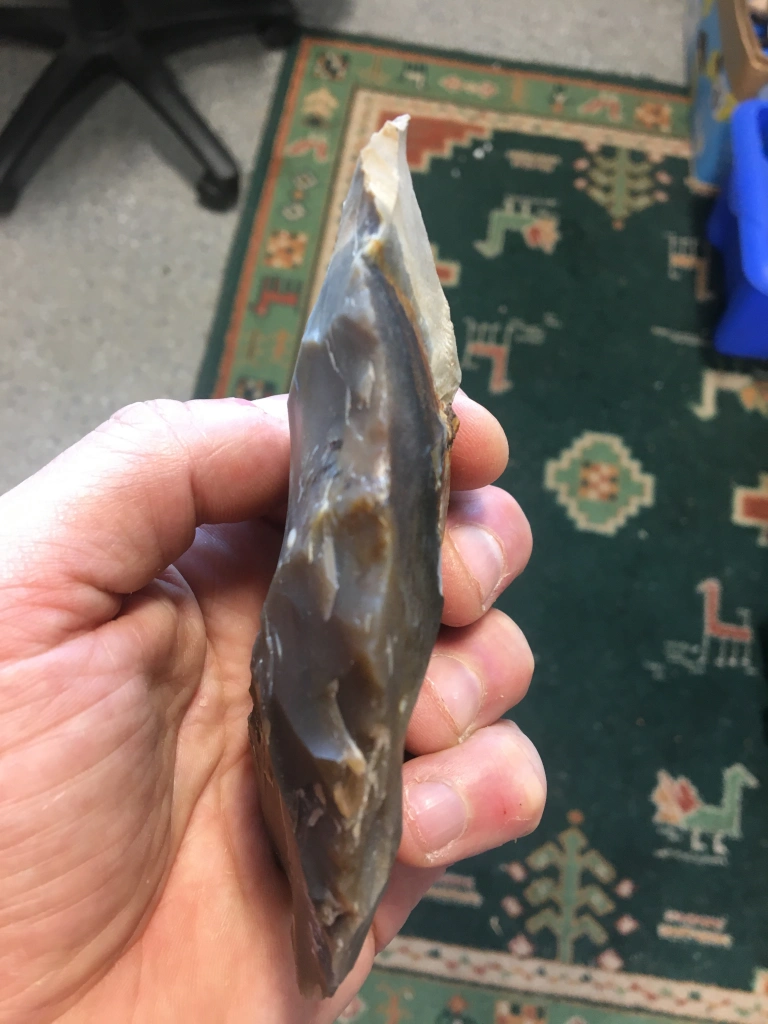I have a number of projects on the go, all of which need people and dates to coincide. I find this kind of scheduling activity stressful at the best of times, and I have three immediate ones to deal with and a lecture to produce.

So after doing a significant chunk of lecture producing I treated myself to some time in the lab. This was a big flake and I reduced it down systematically. I need some new hammer stones and antler hammers as all of mine are worn.

The handaxe is asymmetrical, but in a way I can live with. The edges are all sharp, but best of all, it is a double A side. Both faces are equally interesting. The first picture shows two good thinning flakes meeting in the middle, and coincidently delineating a colour and flint consistency change.

The other face has this interesting fossil in it. I didn’t plan it like that but the texture of the flint around the fossil made me work around it and so it was a negotiated settlement. The rust colour is usually where water has penetrated the flint through flaws in the nodule.

Hammer stone and worn antler problems made me realise how I normally unconsciously choose the right tool for the job at hand. I struggled a bit trying to use a stone that was too large but unworn. This made me think about handaxe reduction.

This handaxe is…hand size! perhaps a lot of the handaxe reduction process was to transform an already useful flake into a good fit with the hand. None of the above handaxe characteristics were planned above and beyond thinking about bifacial reduction. And on that note, back to scheduling
Leave a Reply